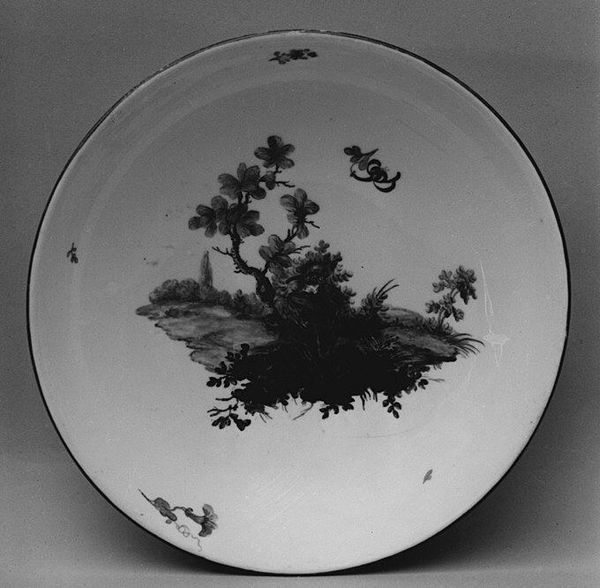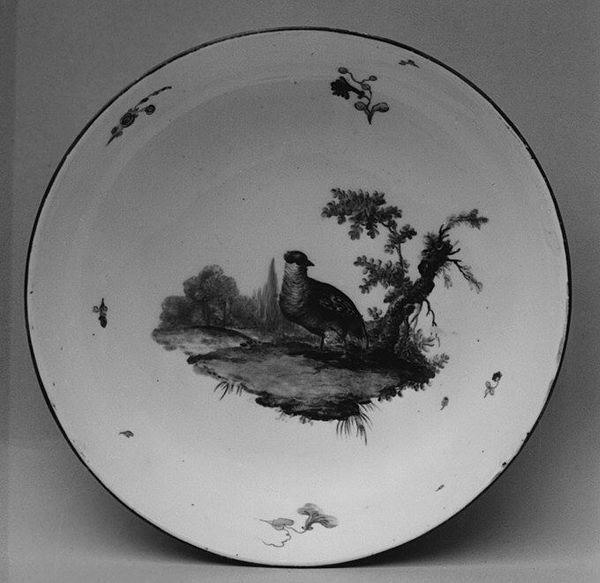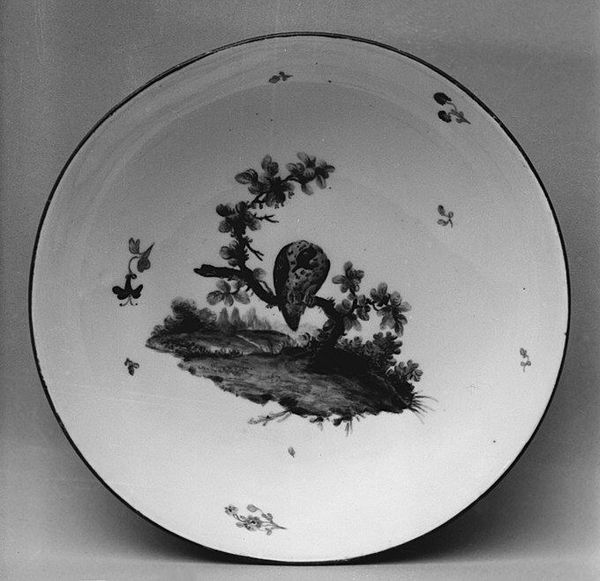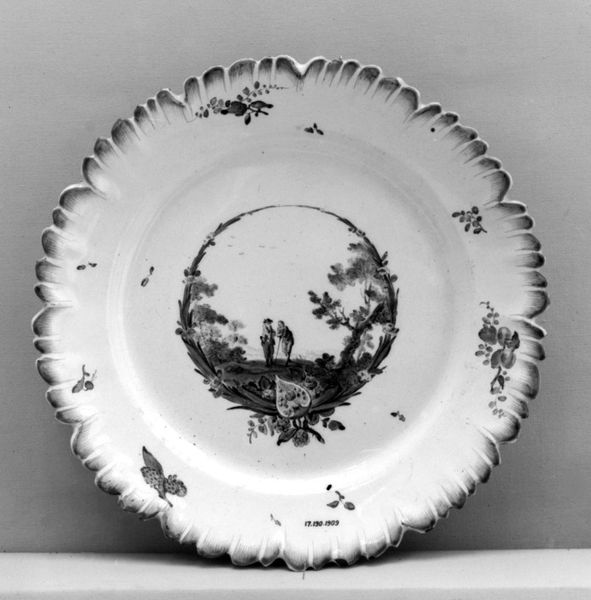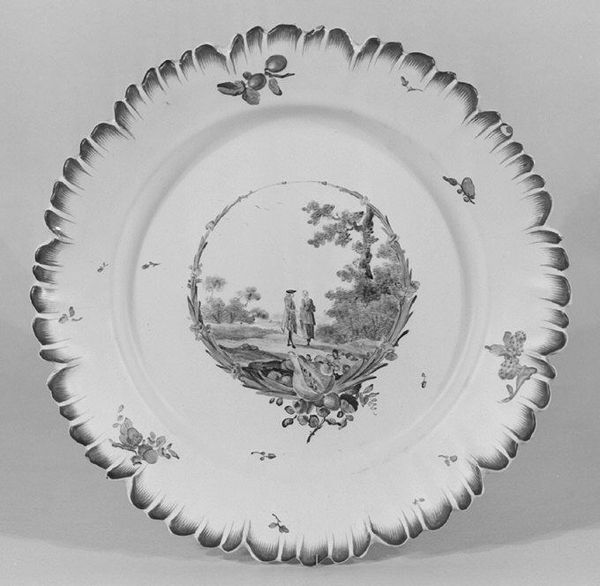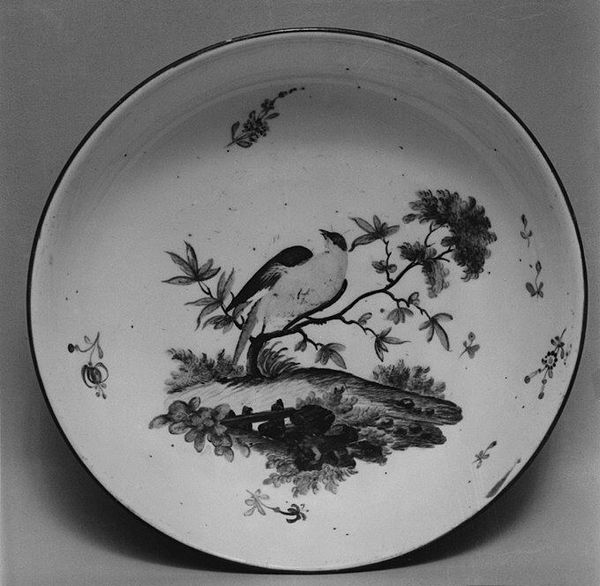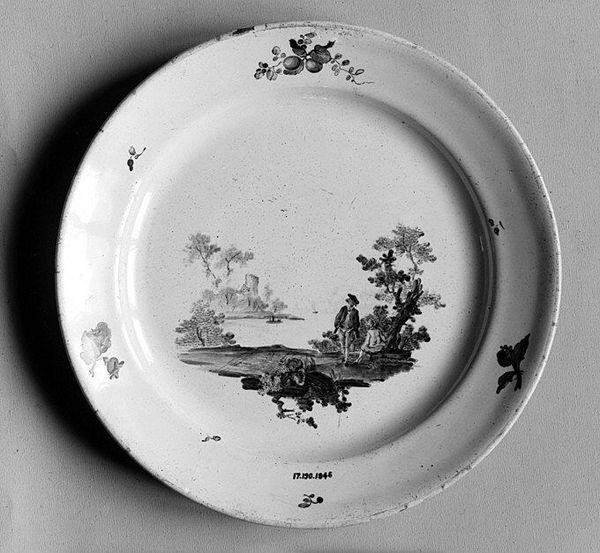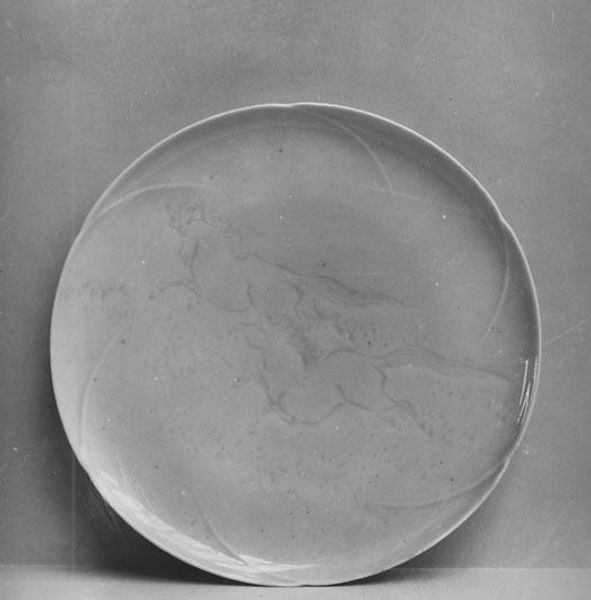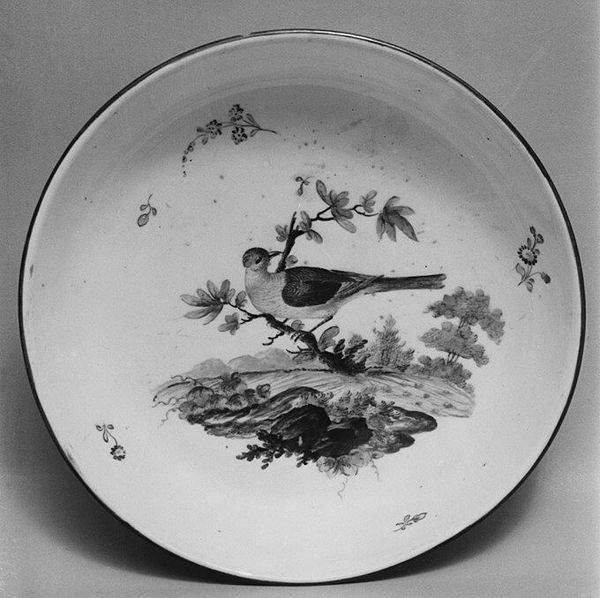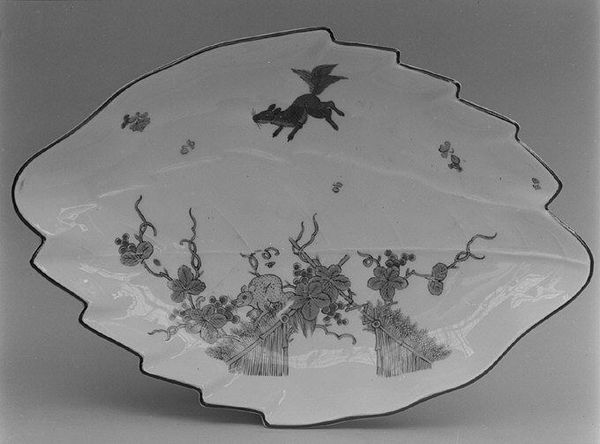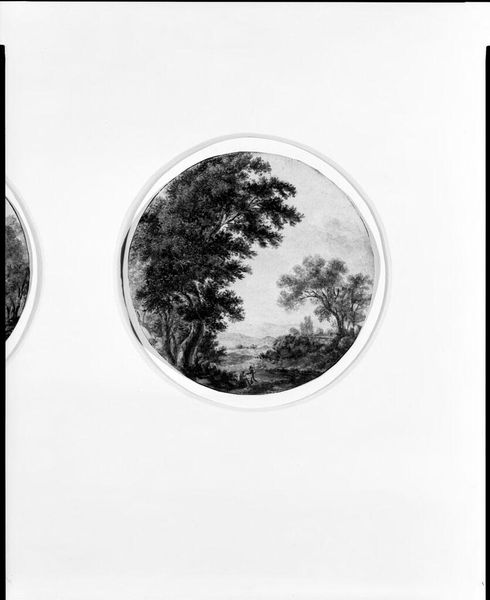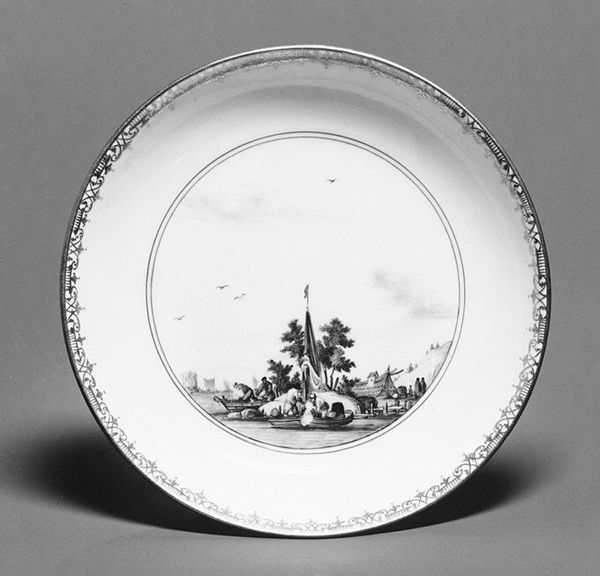
Saucer (part of a service) 1765 - 1775
0:00
0:00
ceramic, porcelain, sculpture
#
ceramic
#
porcelain
#
sculpture
#
monochrome
#
decorative-art
#
monochrome
Dimensions: Diameter: 5 1/4 in. (13.3 cm)
Copyright: Public Domain
Curator: I’m drawn to the mood of this object, the sort of muted, dreamlike landscape it evokes. Editor: This is a porcelain saucer, dating from around 1765 to 1775. It was made at the Frankenthal Porcelain Manufactory, and it’s currently housed at the Metropolitan Museum of Art. Curator: Porcelain from this period… I’m always interested in how such delicate objects navigated the complex socio-economic networks of their time. Consider the labor involved in extracting the kaolin, crucial for making porcelain, then the manufacturing process and distribution. Who consumed it, and what did it symbolize for them? Editor: Exactly! Porcelain, in this era, became a signifier of status and wealth in Europe, reflective of sophisticated craft traditions. And of course, this wasn't an isolated phenomenon. Think about the relationship between European manufacturers like Frankenthal and global trade routes. The import of Chinese porcelain heavily influenced production, creating a unique interplay of cultural and artistic exchange, and often exploitation. Curator: That cross-cultural interaction brings so much depth to the appreciation of the material culture from this time period. In what ways might the monochrome painting here also allude to cross-cultural trade? What of the labor practices implicit in producing this item, when women were particularly central in ceramic design, molding, and decoration? What about access, use, consumption of material culture? Editor: Good point. By the way, this saucer originally formed part of a service—imagine a whole set of these adorning a table! It points to a particular culture of display and dining. Curator: The scale intrigues me. Such intimate scenes, captured in something you would hold in your hand. What’s absent is often as important as what is present, though. How would an art historian typically view porcelain, such as these saucers? In my view, its cultural significance lies less in questions of artistry and authorship, but within the conditions, means, and relationships of production itself. Editor: Yes, it underscores how important objects from decorative art can reveal complex socio-economic dynamics—beyond pure aesthetic appreciation. Thinking of how the domestic lives of elites become embedded in everyday, and mundane-seeming, commodities opens a critical lens to their wider roles in larger political projects, too. Curator: I leave this dialogue really considering the complex life this delicate object experienced, reflecting on both its material constitution and social value. Editor: For me, it underscores the power of studying even seemingly simple items to gain complex social insight. It encourages us to see history in the everyday.
Comments
No comments
Be the first to comment and join the conversation on the ultimate creative platform.
